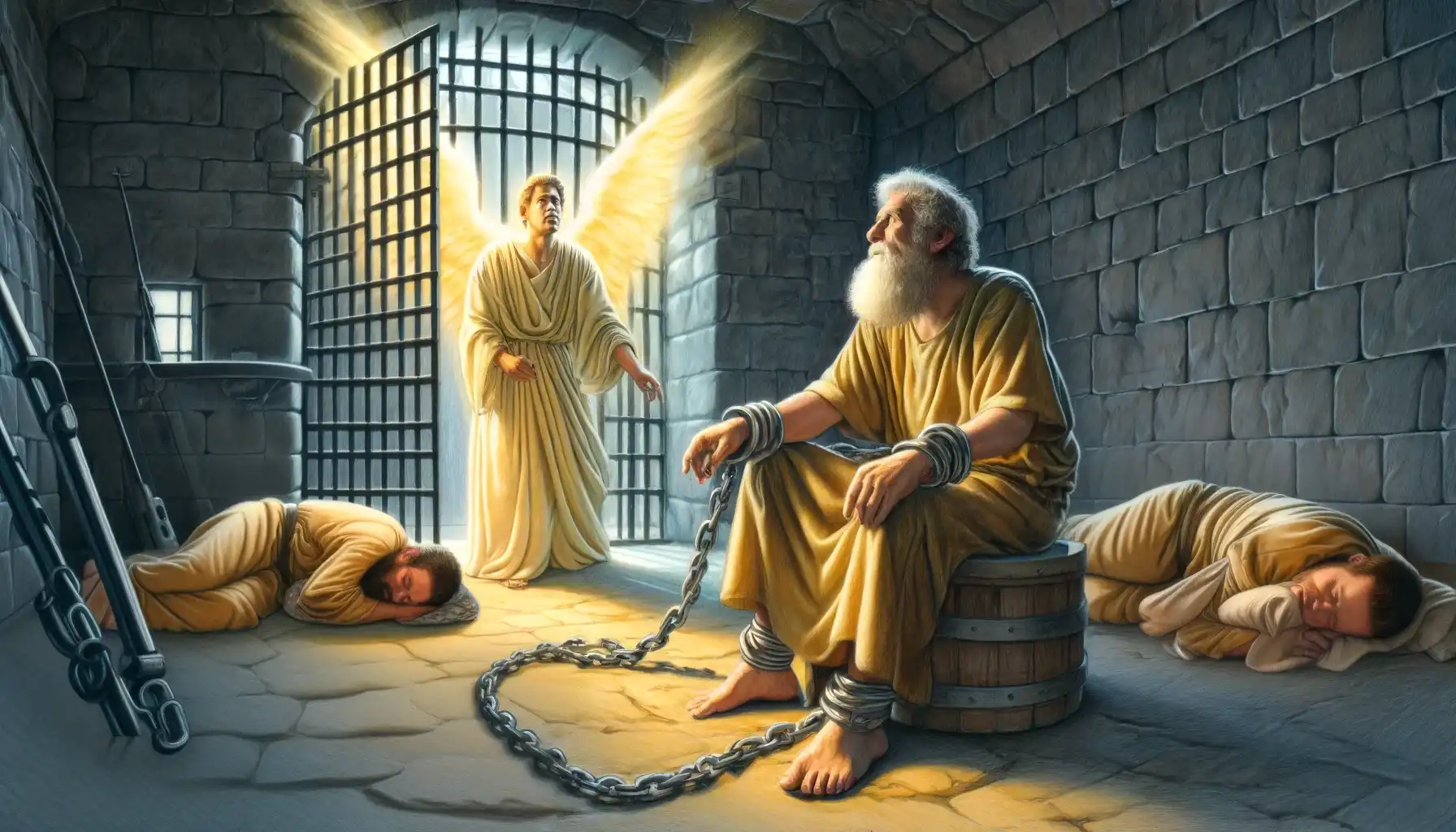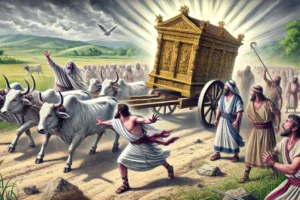
Release of Peter From Prison: Acts 12:6-10
The “Release of Peter from Prison” is a compelling narrative found in Acts 12:6-10, illustrating divine intervention and the power of prayer within the early Christian community. This episode marks a significant moment in the Acts of the Apostles, showcasing the miraculous as a testament to faith amidst persecution.
Quick Facts about Acts 12:6-10:
- Miraculous Escape: The night before Herod was to bring Peter to trial, Peter was sleeping between two soldiers, bound with two chains, and guards stood watch at the entrance. An angel of the Lord appeared and a light shone in the cell. The angel struck Peter on the side and woke him up, instructing him to quickly get up. The chains fell off Peter’s wrists.
- Angel’s Guidance: The angel told Peter to dress and follow him. Despite following the angel, Peter was not sure that what the angel was doing was real; he thought he was seeing a vision.
- Passing the Guards: They passed the first and second guards and came to the iron gate leading to the city. It opened for them by itself, and they went through it. When they had walked the length of one street, suddenly the angel left him.
- Realization of Reality: Only after the angel left did Peter come to himself and realize that the Lord had sent His angel and rescued him from Herod’s clutches and from everything the Jewish people were hoping would happen.
- Theological Significance: This event is rich in symbolic and theological significance, demonstrating God’s ongoing protection of the apostles and, by extension, His church. It highlights the theme of deliverance and the effectiveness of communal prayer, as the church was earnestly praying for Peter during his imprisonment.
The “Release of Peter from Prison” in Acts 12:6-10 is a narrative that encapsulates several theological themes central to the Christian faith, including divine intervention, the power of prayer, and the protection and guidance of the early Church. Here’s a detailed and comprehensive analysis of this passage:
Context and Historical Background
The event takes place during a period of increasing persecution of Christians by King Herod Agrippa I, a ruler known for his harsh treatment of the early Christians to appease the Jewish population. The imprisonment of Peter is part of a broader narrative of martyrdom and suffering, which includes the execution of James, the brother of John.
Divine Intervention
The intervention by an angel of the Lord, resulting in Peter’s miraculous escape, is central to the passage. This divine intervention is immediate and tangible. The angel’s appearance and the light that fills the prison cell signify God’s presence and power, breaking through the darkness of human despair and captivity. The falling off of Peter’s chains symbolically represents liberation from worldly bondage, underscoring God’s ability to overcome earthly constraints.
The Role of Prayer
The narrative occurs in the context of earnest prayer by the church on Peter’s behalf. This collective prayer is a crucial element, suggesting that the miraculous escape was an answer to the faithful’s petitions. The passage reflects a communal faith dynamic, where the prayers of the church directly influence divine action. This serves as an encouragement to believers in the power and necessity of prayer, especially in times of crisis.
Symbolism and Theology
The passage is rich with symbolic meanings:
- The Chains: Represent the persecution and trials faced by believers, which are overcome not by human effort, but through divine power.
- The Automatically Opening Gate: Symbolizes the effortless ways God can make paths where none seem to exist, a metaphor for spiritual liberation and divine providence.
Theologically, the story illustrates key Christian beliefs about God’s sovereignty and care for His people. God’s intervention on behalf of Peter exemplifies His protective care over His apostles and, by extension, His Church. This aligns with the themes of God’s kingdom prevailing against the powers of the world, a recurrent motif in Acts.
Literary Structure and Style
The narrative structure of the passage is dramatic, employing elements of suspense and surprise that highlight the suddenness and unexpectedness of God’s interventions. The style is succinct and purposeful, with each detail—from the angel’s appearance to the miraculous opening of the gate—serving to reinforce the theme of divine rescue.
Conclusion
The story of Peter’s release from prison in Acts 12:6-10 serves multiple functions: it is a testament to the power of prayer, a demonstration of God’s direct intervention in the affairs of the early Church, and a source of encouragement to believers facing persecution. This narrative reinforces the theological assertion of God’s ultimate authority over earthly powers and His willingness to act miraculously for the sake of His people. Through this, Luke, the author of Acts, communicates not just historical events but also theological truths about the nature of God and the expected response of the faithful—prayer, trust, and perseverance.



